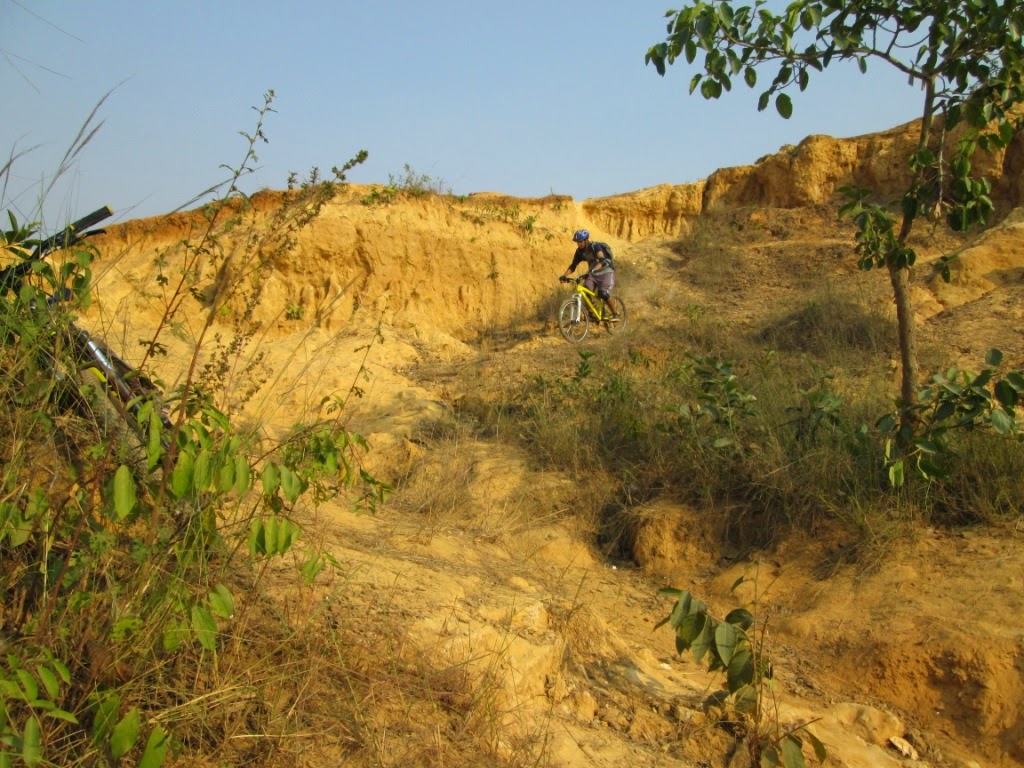(For Rahul, 600km brevet is
a stepping stone for ultra cycling. "It seems to be a big figure but in reality,
it’s just another milestone. I always knew that a human body is capable of
doing great things so I told myself, let’s put that thought to the test. It’s a
fight within — between the body and the mind")
We — Sudipto, Subho and me —
started from City Centre, New Town, at 12.30am on December 20 for our maiden
attempt of Brevet 600.
It was quite cold — the
cellphone app showed 11 degrees Celsius but felt like 7°C — and we were going
at a very comfortable speed as we knew that a long road lies ahead of us.
We almost took five hours
time to reach our first check point (Sher-e-Punjab, Kolaghat), which was 88km
from the starting point. We did not took a break there and kept on moving after
taking a selfie at the unmanned control point.
The next control point was
190km away and we were moving at an average speed of 25km per hour or a bit more.
After covering 140km, we took rest for 10 minutes at Balihati, just a few
kilometre before reaching Kharagpur. Next stop we took after covering a total
distance of 160km was a dhaba were we first “unloaded” and then loaded ourselves
with good breakfast followed by half-an-hour rest.
We practically killed more
than an hour there and started again at approx 10.40am. We took small breaks
after every 30km and rode next 100km in five-and-a-half hours (approx) after
which we took a lunch break of half an hour.
The next control point was
only 15km away at Remuna Balasore bus stop where we reached around 5.20pm and
moved on towards Soro. We kept on pedalling and reached Soro, around 35km from
Balasore control. We took a 15-minute break before reaching the control point,
which was only a kilometre away. We finally reached Natapada Chowk — the 300km
mid-point of the brevet — at 9pm where we took dinner and an hour’s nap. We
knew that we did not have enough time in hand with only 18 hours left.
We started our ride back to
Kolkata from Soro around 10.45pm amid chill beyond our imagination. Adding to our
woes, were poor visibility, knee pain and saddle sore.
The next 200km was really
difficult. We all were pedalling hard all night long. At every 20km, we were
taking a break of 5 minutes. Maintaining an average speed of approximately 22km
per hour, we kept on pedalling. After riding 100km, we noticed that four hours have
already passed and it was 3am. In the wintry morning, we all needed some rest
so we three decided to take a 20-min short nap at a roadside dhaba but that 20
minutes stretched to an hour and we were back on the saddle around 4.05am.
Now, we were taking breaks
at every 10km or so and our average speed went down to 18km per hour. Poor
visibility and extreme cold were slowing us down. We firmly decided that no
matter what happens, we have to finish before time. It was 8am in the morning
with the Sun was out and weather turning warmer. In the last four hours, we
covered approximately 88km.
While we were taking a
break, we were informed that in the next two hours we need to reach the Sher-e-Punjab,
Kolaghat, control point, which was 30km away. We rested for another 15 minutes and
then took off for Kolaghat. At Sher-e-Punjab, we had our breakfast and got
fresh and then started at 11am for the finish line, which was only 77km away.
Knowing that we have five-and-a-half hours to cover only 77km, we moved at a
comfortable pace. We made several halts and
reached City Centre, New Town, at 3.16pm.
Happiness is not the feeling that describes the moment. I would say we were rather relieved then happy. The difficulty faced on the route only makes the journey more adventurous. If anyone ask me to sum up Brevet 600, then I would say “what doesn’t kills you but makes you stronger”.



































.JPG)













